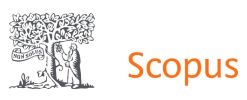JOURNAL DETAIL
Geopolymer Paving Blocks Made From Fly Ash and Bagasse Ash Under Different Curing Conditions
Paper Type |
Contributed Paper |
Title |
Geopolymer Paving Blocks Made From Fly Ash and Bagasse Ash Under Different Curing Conditions |
Author |
Rattapon Somna, Prachoom Khamput and Kiatsuda Somna |
Email |
kiatsuda.so@rmuti.ac.th |
|
Abstract: This re |
|
Article ID |
e2024041 |
Received Date |
2024-01-11 |
Revised Date |
2024-03-26 |
Accepted Date |
2024-04-03 |
Full Text |
Download |
Keyword |
fly ash, bagasse ash, geopolymer paving block, curing condition |
Volume |
Vol.51 No.3 (May 2024) |
DOI |
https://doi.org/10.12982/CMJS.2024.041 |
Citation |
Somna R., Khamput P. and Somna K., Geopolymer Paving Blocks Made From Fly Ash and Bagasse Ash Under Different Curing Conditions, Chiang Mai Journal of Science, 2024; 51(3): e2024041. DOI 10.12982/CMJS.2024.041. |
| View:1,622 Download:620 | |
RELATED ARTICLE
Article ID: e2025082
Author:Tzyy Lih Lee, Chun-Chieh Yip, Lloyd Ling, Kok Zee Kwong, Jing-Ying Wong and Foo Wei Lee
Vol.52 No.6 (November 2025) View: 397 Download:275
Article ID: e2023049
Author:Pongsakorn Truttim, Suwimol Asavapisit and Rungroj Piyaphanuwat
Vol.50 No.5 (September 2023) View: 1,503 Download:854
page: 207 - 216
Author:Chareon Panyo, Apinon Nuntiya and Anucha Wannagon
Vol.47 No.1 (January 2020) View: 1,101 Download:766
page: 1863 - 1874
Author:Sumrerng Rukzon and Prinya Chindaprasirt
Vol.45 No.4 (July 2018) View: 1,066 Download:419
page: 1855 - 1862
Author:Nonthaphong Phonphuak and Prinya Chindaprasirt
Vol.45 No.4 (July 2018) View: 940 Download:1,024
page: 126 - 134
Author:Piyanut Muangtong [a], Suvimol Sujjavanich [c], Sansanee Boonsalee [d], Sumate Poomiapiradee [e], an
Vol.40 No.1 (JANUARY 2013) View: 773 Download:279
page: 309 - 320
Author:Kedsarin Pimraksa* [a], Johannes Kurzweil [b] and Werner Wruss [c]
Vol.33 No.3 (SEPTEMBER 2006) View: 892 Download:257
Copyrights © Since 2021 All Rights Reserved by Chiang Mai Journal of Science










 search aimed to study the geopolymer paving blocks made from fly ash and bagasse ash under different curing conditions. The fly ash was replaced by bagasse ash at 10, 20 and 30% by weight of the binder. Sodium hydroxide and sodium silicate solutions were used as activated solutions. Three curing methods were studied: curing with plastic wrap (PT), curing at 35 °C for 1 hour (OV), and curing with sunlight (SU). Compressive strength and water absorption were investigated. The surface characteristics of the geopolymer paving block were studied using microstructure techniques. Sun curing provided the highest compressive strength. The water absorption values increased with an increase in the replacement percentage of bagasse ash. The surface of the geopolymer paving blocks showed remnants of the starting materials from the reaction. The geopolymer paste from the geopolymerization reaction was also found. This indicated the beneficial use of waste materials to produce environmentally friendly building materials.
search aimed to study the geopolymer paving blocks made from fly ash and bagasse ash under different curing conditions. The fly ash was replaced by bagasse ash at 10, 20 and 30% by weight of the binder. Sodium hydroxide and sodium silicate solutions were used as activated solutions. Three curing methods were studied: curing with plastic wrap (PT), curing at 35 °C for 1 hour (OV), and curing with sunlight (SU). Compressive strength and water absorption were investigated. The surface characteristics of the geopolymer paving block were studied using microstructure techniques. Sun curing provided the highest compressive strength. The water absorption values increased with an increase in the replacement percentage of bagasse ash. The surface of the geopolymer paving blocks showed remnants of the starting materials from the reaction. The geopolymer paste from the geopolymerization reaction was also found. This indicated the beneficial use of waste materials to produce environmentally friendly building materials.